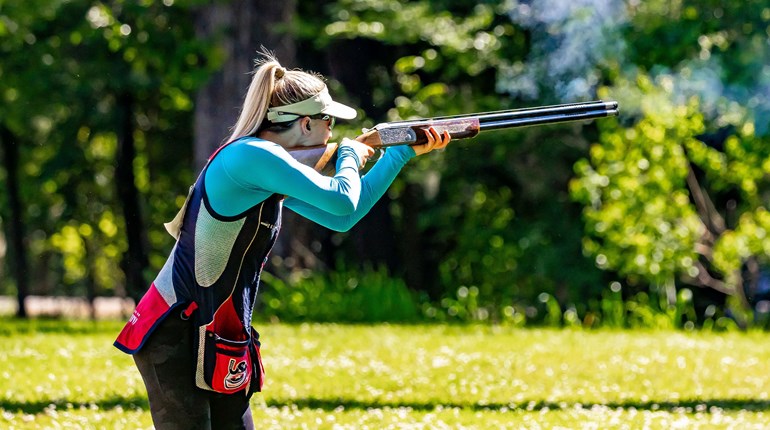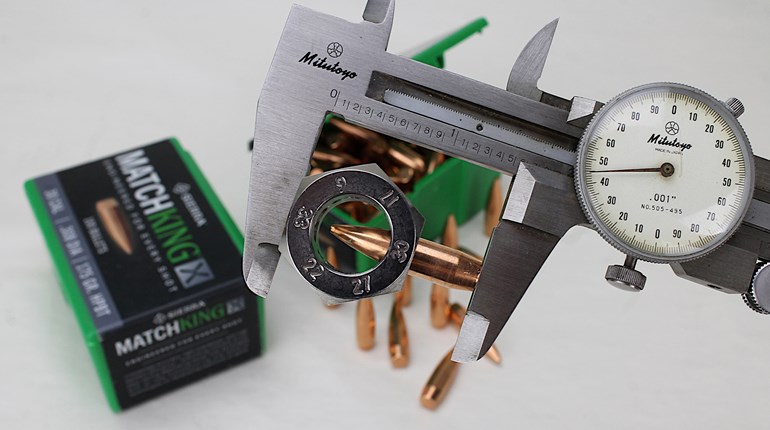
Millie the springer spaniel turned her head sharply when the pheasant’s scent entered her nose, her canine brain instantly telling her the direction from which it came. She charged through the South Dakota field, lost the scent for a moment and made a little circle to find it again. As she got back on the pheasant’s trail, butterflies filled my stomach. You know the feeling—the weird tickle in your belly when you know something thrilling is about to happen. The big rainbow-colored bird flushed into the air high to my left and the excited Millie leapt up after it. For a moment bird and dog seemed to float. I eased off my shotgun’s safety while mounting it to my shoulder, swung the barrel ahead of the bird and pressed the trigger. Millie’s eyes looked so happy as she merrily retrieved the rooster.
I was happy, too. I’d never been to South Dakota before, and I’d just taken my second bird of the day in a public-hunting area. I do almost all of my upland-game hunting on public land. We are very lucky in this country, because no matter where we live or visit, chances are there’s a public-hunting area nearby. If you’ve ever dreamed of hunting a pheasant-rich state like the Dakotas or Nebraska, all you have to do is pull out a map, circle a few public areas, beg your parents to drive you there and go hunting. Well, maybe it’s not quite that simple. After all, some public areas offer more birds than others, so you’ll need these tricks to find the best pheasant hunting.
Types of Public Hunting Areas
There are three major types of land that anyone can hunt: state land such as wildlife management areas; federally controlled land such as national forests; and privately owned “walk-in” areas. One confusing thing is that many states refer to their public land areas using different terms. For instance, South Dakota has “game production areas” and Pennsylvania has “state game lands.” You’ll simply need to visit your state game department’s website to learn what it calls its public hunting areas.
Federal lands include properties such as national wildlife refuges and national forests. Hunting is generally not permitted in national and state parks; however, there are sometimes special park hunts, so be sure to pay attention for any in your area. Many military bases also offer great public hunting, but some require a small access fee.
Then there’s “walk-in” areas, which are a really neat concept. The land is owned by farmers and other private citizens, but for a small annual fee paid by the state government, the landowners allow anyone to hunt their land for free! Be extra courteous when hunting a walk-in area. Pick up your shells and don’t leave any trash. We want the landowners to continue to open their lands up as public “walk-in” areas.
Scout it Out Online
Be sure to consult your state game department’s website. Most have a tab labeled “public land” or “public hunting” that you can click for helpful information. Many states now have maps of all their public areas online, and some even label the areas to let you know which types of hunting are best there. Print out the map, circle a few public areas nearby and you’re halfway to a good hunt already!
Don’t Be Shy
When I arrived in South Dakota, I pulled up to a public area I’d circled on my map and simply started hunting. The habitat looked great—but after an hour I hadn’t found a single bird! So I decided to try a new spot and loaded up Millie. About a mile down the road I spotted a game warden and I pulled in to talk.
“Howdy, having any luck?” the warden asked, his badge gleaming in the sun.
“Not really,” I said. “It’s my first time in South Dakota. Can you recommend a good public area?”
“Tell you what,” he replied, “Head down this road three miles and after the second stop sign, hang a right. A good public area will be on your left after about a mile.”
I thanked him and was on my way. After parking my truck next to the public land, I loaded my gun and released Millie. I’d only walked 25 yards from the vehicle when two fat rooster pheasants rocketed up and flew to the right. In my surprise, I missed both birds, but two other roosters would not be so lucky that afternoon.
If I hadn’t stopped and chatted with the game warden, I never would’ve found that public-land honeyhole. It was an important lesson—it pays to be chatty if you want to find good hunting areas. Game wardens can be good sources of information, as can state game biologists. Try calling your state game department in the late summer or early fall. Request to speak with a bird biologist, and ask if he or she can recommend a few public-hunting areas. They’re usually more than willing to help.
Not All Public Areas Are Equal
The most important skill you need to find pheasants is the ability to identify good habitat. So, where do pheasants like to live? It’s easier than algebra: Pheasants need a good food source with a thick field for shelter somewhere nearby. The birds stick to the shelter cover to avoid predators, and they don’t like to wander far to eat. If you can find crops such as corn, milo, sorghum, wheat, oats or other grains next to a field of grasses, cattails, bulrushes or other good shelter cover, you’re in business. One of my favorite places to find pheasants is a thick hedgerow or shelterbelt with crops on either side. You can often find birds concentrated in these narrow strips.
If you plan to hunt near your home, by all means, use this information and get out there and scout! Even if you plan to hunt the same public areas as last year, it’s important to remember that crops are rotated every few years. That cornfield that held so many pheasants last year my no longer be there. Don’t get frustrated; the pheasants are still there somewhere! Just find some new patches of public ground where pheasant food juts up against a nice field where the birds can relax and feel safe. If you’re hunting somewhere far from home, circle public hunting areas on your map and visit them one by one. Take the time to hunt the areas that have good pheasant habitat, skip those that don’t and with a little luck you’ll be eating a better dinner than can be found in any restaurant: fried pheasant!
Best States to Find Public-Land Pheasants
Iowa
(515)281-5918; iowadnr.gov
Where to Hunt:
Northwest and north-central regions
Kansas
(620) 672-5911; ksoutdoors.com
Where to Hunt:
Phillips, Rooks, Norton, Graham, Smith and Osborne counties in north
Hodgeman, Ford, Gray, Haskell, Seward and Stevens counties in southwest
Minnesota
(888) 646-6367; dnr.state.mn.us
Where to Hunt:
Lac qui Parle Wildlife Management Area
Southwest corner of state is typically best
Nebraska
(402) 471-0641; ngpc.state.ne.us
Where to Hunt:
Southwest corner (below Panhandle)
Hitchcock and Wayne counties
North Dakota
(701) 328-6300; gf.nd.gov
Where to Hunt:
Eastern end of Lake Sakakawea
Missouri River bottoms from Bismarck south
South Dakota
(605) 773-3381; sdgfp.gov
Where to Hunt:
Near cities of Brookings, Aberdeen and Pierre
Wisconsin
(608) 266-2621; dnr.wi.gov
Where to Hunt:
Glacial Habitat Restoration Area, map: dnr.wi.gov/org/land/wildlife/ghra







































